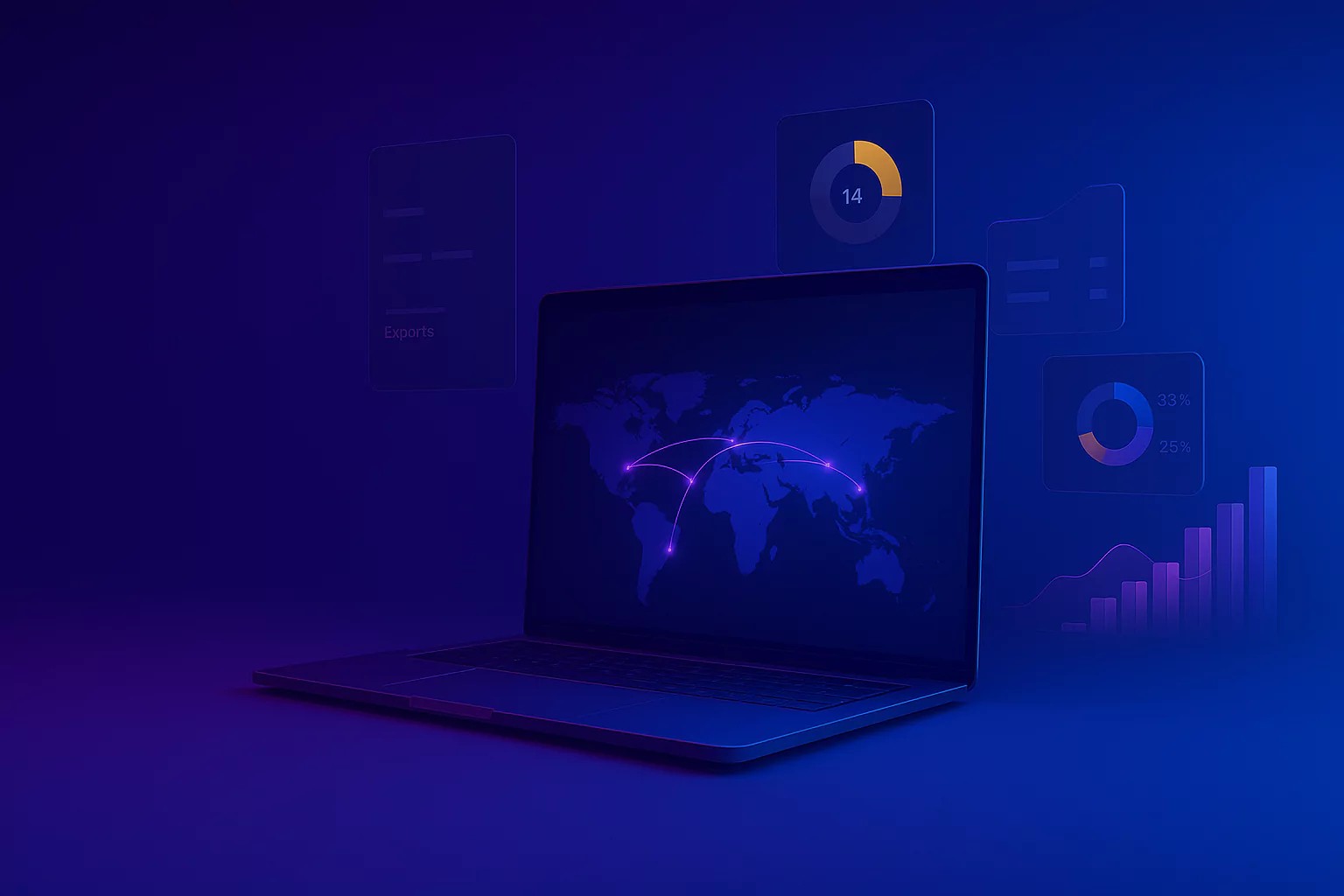Data Governance Versus Data Management: A Comprehensive Guide to Their Differences and Synergies
Data Governance Versus Data Management: A Comprehensive Guide to Their Differences and Synergies
In today’s data-driven landscape, managing vast amounts of information is not just a technical necessity but a strategic imperative. Effective data management encompasses the collection, organization, and maintenance of data, as well as its access to relevant personnel. This is where the critical role of data governance comes into play. Without clear guidelines and protocols, even the most meticulously organized data can lead to significant challenges, underscoring the need for robust governance frameworks that ensure data safety, ethical usage, and operational efficiency.
For business leaders, data professionals, and anyone who handles data, understanding these concepts is vital for recognizing their combined impact on organizational success. This guide explains the difference between data governance and data management while exploring how they collaboratively enhance organizations’ ability to effectively leverage their data.
Streamline Data Management with AI
Discover how AI analyzes massive data sets simultaneously in our eBook.
Download eBook
Defining Data Governance and Data Management
While data governance and management may appear similar, they serve distinct roles and complement each other in protecting organizations’ data. This section explores the definition of each term and highlights their importance within a data strategy.
Data Governance
Data governance entails the development of clear policies that dictate how a company manages its data, ensuring that it remains accurate, reliable, and safeguarded against misuse. It involves the establishment of architectures and guidelines for overseeing every stage of an organization’s data lifecycle—from collection and storage to transformation, sharing, utilization, and eventual deletion.
Data governance answers the following questions:
- Who owns the data? Defines accountability by identifying who is responsible for managing and maintaining various datasets.
- Who can access specific data? Establishes guidelines regarding which individuals or teams have the authority to access, modify, or utilize data, thereby ensuring security and privacy.
- What security measures are in place to protect data? Ensures that security protocols—such as encryption and firewalls—are implemented to safeguard sensitive information from unauthorized access or breaches.
- What percentage of our data complies with the new regulations? Assesses whether an organization’s data handling practices meet the latest privacy regulations and standards, helping mitigate legal risks.
- Which data sources are approved for use? Ensures that only verified and trustworthy sources are utilized within the organization to maintain the quality and consistency of data.
Data Management
Data management is the technical implementation of data governance. It refers to the comprehensive process of collecting, storing, organizing, and utilizing data effectively within an organization. By aligning data management practices with the overall business strategy, organizations can ensure that data is not only efficiently utilized but also adheres to relevant policies and regulations.
Data management answers the following questions:
- Where is your data currently located? Tracks the locations of all important data, whether in the cloud or physical storage, ensuring easy access.
- How can you move your data? Establishes secure and efficient methods for transferring or sharing data across different systems and teams.
- Is your data reliable and accurate? Verifies that information is up-to-date, consistent, and free from errors.
Integrating Data Management and Data Governance
Integrating data governance with data management is essential for ensuring that data remains secure, well-organized, and compliant with relevant regulations. This section explains the core differences between data management and governance, their complementary roles, and best practices for effective data integration.
Core Differences
To gain a clearer understanding of the distinctions between DG and DM, we can examine them through various perspectives, including scope, focus, implementation, people, and technology.
| Data Governance | Data Management | |
| Scope | Sets the overall strategy related to policies, compliance, and risk management to ensure proper use of data. | Focuses on technical aspects, such as storing, processing, and organizing data to ensure smooth internal operations. |
| Focus | Concerned with creating rules and guidelines for proper data usage to maintain quality, security, and trust. | Addresses daily operations—how data is handled, stored, and accessed—prioritizing efficiency. |
| Implementation | Establishes policies and procedures, often utilizing data stewards to ensure compliance with regulations. | Relies heavily on tools and technologies for effective data organization and storage. |
| People | Involves business leaders who set rules and IT teams who implement them. | Typically involves technical roles such as data engineers and database administrators. |
| Technology | Employs tools designed to document and enforce rules across the organization, such as data catalogs and glossaries. | Leverages practical tools aimed at storing, processing, and exploring data for daily operational needs. |
Complementary Roles and Interplay
Data governance and data management are interdependent, each playing a crucial role in maximizing the value of an organization’s data. Without governance, DM resembles a structure built without a blueprint; conversely, without management, DG becoming mere paperwork. For organizations to fully unlock the potential of their data, these two functions must operate in harmony. Below are examples illustrating how their collaboration creates meaningful impact.
Role-based Access:
Data governance establishes who should have access to specific data by defining roles and setting access rules. Data management enforces these rules by assigning access rights and monitoring compliance, ensuring that the right individuals have access to the right data while maintaining security and accuracy across the organization.
Data Cataloging:
Data governance mandates that all data assets are clearly defined and tracked, including details such as their origin, ownership, and historical changes. Data management facilitates this by organizing data from various sources into a cohesive system that allows for efficient cataloging and easy access, helping teams locate the information they need.
Data Security and Privacy:
Data governance sets the standards and regulations for protecting data in compliance with privacy regulations, such as the European General Data Protection Regulation (GDPR). Data management implements these policies by deploying tools that encrypt data, monitor access, and ensure consistent adherence to security practices For example, in privacy led marketing, this collaboration ensures that consumer data is handled securely, fostering trust while meeting regulatory requirements.
Data Quality:
Data governance defines the characteristics of high-quality data, establishing standards for accuracy and completeness. Data management ensures these standards are met through processes like cleaning, validating, and organizing data, making it reliable and ready for use.
Data Integration:
Data governance outlines the rules for integrating different datasets while preserving accuracy and value. Data management executes this by assessing data quality, correcting inconsistencies, and ensuring that the integration process aligns with governance standards.
Best Practices for Effective Data Integration
To maximize the value of data, adhering to best practices for effective integration is essential. This approach helps maintain well-organized, accurate, and compliant datasets. Below are recommended practices for effective data integration:
- Establish a clear DG framework: Develop a comprehensive governance framework that defines how your organization will manage data in alignment with its business objectives. Assign specific roles, such as data stewards and owners, and define rules for accessing, maintaining, and resolving data issues.
- Encourage collaboration across teams: Effective data integration relies on collaboration among departments such as IT, data analytics, legal, and operations. Foster open communication through regular meetings and shared goals to keep all stakeholders aligned, facilitating a smoother integration process.
- Formulate detailed data policies: Create comprehensive policies that safeguard data privacy and security while adhering to industry standards and legal requirements. Regularly update these policies and provide training to employees to ensure understanding and compliance with guidelines.
- Implement effective data quality management: Maintaining high-quality data is vital for successful integration. Employ processes such as data profiling, cleansing, and validation to ensure your datasets remain accurate and reliable. High data quality leads to better business decisions and enhanced overall efficiency.
- Enhance data literacy and provide training: Educating your workforce on the importance of data governance is essential for effective data management. Regular training sessions can improve overall data literacy within the organization, helping employees understand their roles in managing and protecting data.
- Use technologies to support data governance: DG platforms can automate tasks such as managing metadata, organizing data catalogs, and tracking compliance. These tools also provide valuable insights and analytics to identify areas needing improvement. Selecting the right technology simplifies governance processes while accommodating your expanding data needs.
- Regularly review and update governance policies: As your business evolves, it is essential to periodically review and update governance policies to remain compliant with new regulations and adapt to technological advancements or shifts in business strategy.
Infomineo’s Approach to Data Management and Governance
Infomineo offers comprehensive support for data management and governance processes, recognizing their critical roles in achieving organizational objectives. Our experienced team collaborates with clients to analyze their data architecture and develop tailored management systems for proprietary and customer data.
We integrate datasets from various sources to ensure seamless data flow across departments, minimize duplication, and maintain consistency. Additionally, we perform data manipulation and engineering while connecting datasets with existing or new tools to enhance functionality.
FAQs
What is data governance and why is it important?
Data governance involves creating clear policies and guidelines for managing a company’s data across all stages of the data lifecycle—from collection and storage to transformation, sharing, utilization, and deletion. It is vital for ensuring that data remains accurate, reliable, and protected from misuse.
What is meant by data governance?
Data management is the technical implementation of data governance, ensuring the collection, storage, organization, and utilization of data across systems and teams. Aligning DM practices with DG ensures efficient data usage and compliance with relevant policies and regulations.
What are the main differences between data governance and data management?
Data governance and data management serve distinct roles that could be measured across scope, focus, implementation, people, and technology:
- Scope: DG sets policies for data use; DM implements them through technical tasks.
- Focus: DG develops rules for quality and security; DM prioritizes daily operations.
- Implementation: DG develops policies in cooperation with data stewards; DM implements them through tools and technologies.
- People: DG involves business leaders and IT teams; DM is executed by technical roles.
- Technology: DG tools document rules; DM tools focus on storage and analysis.
How do data governance and data management work together?
Data governance sets the framework for how data should be handled, including access permissions and quality standards. Data management operationalizes these guidelines by executing tasks such as assigning access rights, organizing datasets, and ensuring security. Together, they guarantee that data is well-protected, accurate, and effectively utilized.
What are best practices for effective data integration?
To ensure effective data integration, it is important to follow several key practices. First, establish a clear data governance framework that aligns with business goals, then encourage collaboration across teams through regular communication and shared objectives. Additionally, formulate detailed policies on data privacy and security while ensuring employees receive adequate training to enhance literacy. Implement effective data quality management through data profiling and cleansing to maintain data integrity and leverage technologies to support data governance, automate management tasks, and streamline processes. Finally, regularly review and update governance policies to adapt to changes in the organization and its environment, ensuring ongoing relevance and effectiveness.
Conclusion
Data management and data governance serve distinct yet complementary roles in the effective handling of data. Data management focuses on the daily operations of data—how it is organized, stored, and utilized—ensuring that information is easily accessible and reliable for decision-making. In contrast, data governance establishes the overarching policies and rules for managing data, setting standards for security, privacy, and compliance to ensure alignment with regulatory requirements and business objectives.
In essence, data management addresses the operational aspects of data handling, while data governance provides the strategic framework necessary for long-term success. For organizations to achieve optimal results, it is essential to integrate these two functions effectively. This can be accomplished by establishing a clear DG framework, promoting collaboration across departments, implementing and enforcing robust data policies, and utilizing appropriate tools.
Regular updates to governance practices are vital to adapt to evolving regulations and business needs. By balancing and integrating data management with DG, organizations can ensure their data is not only well-managed and secure but also aligned with their strategic goals.










